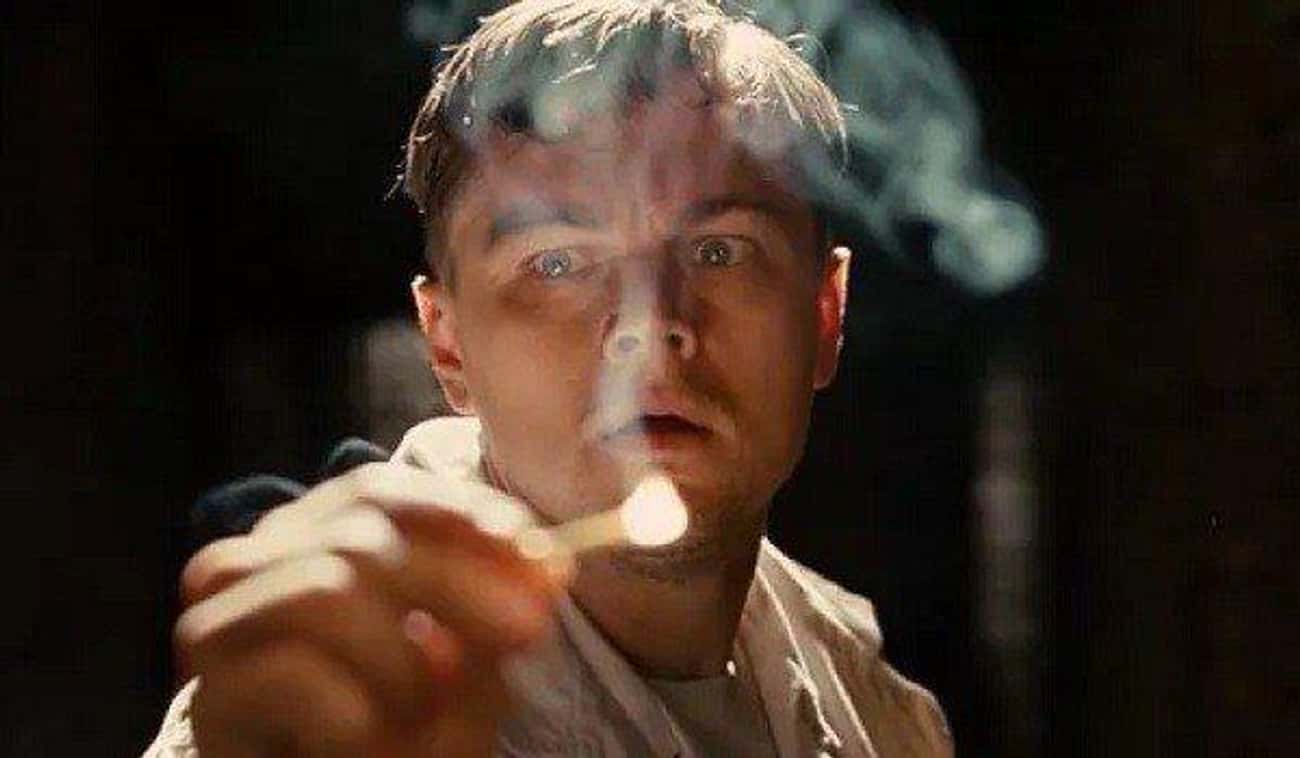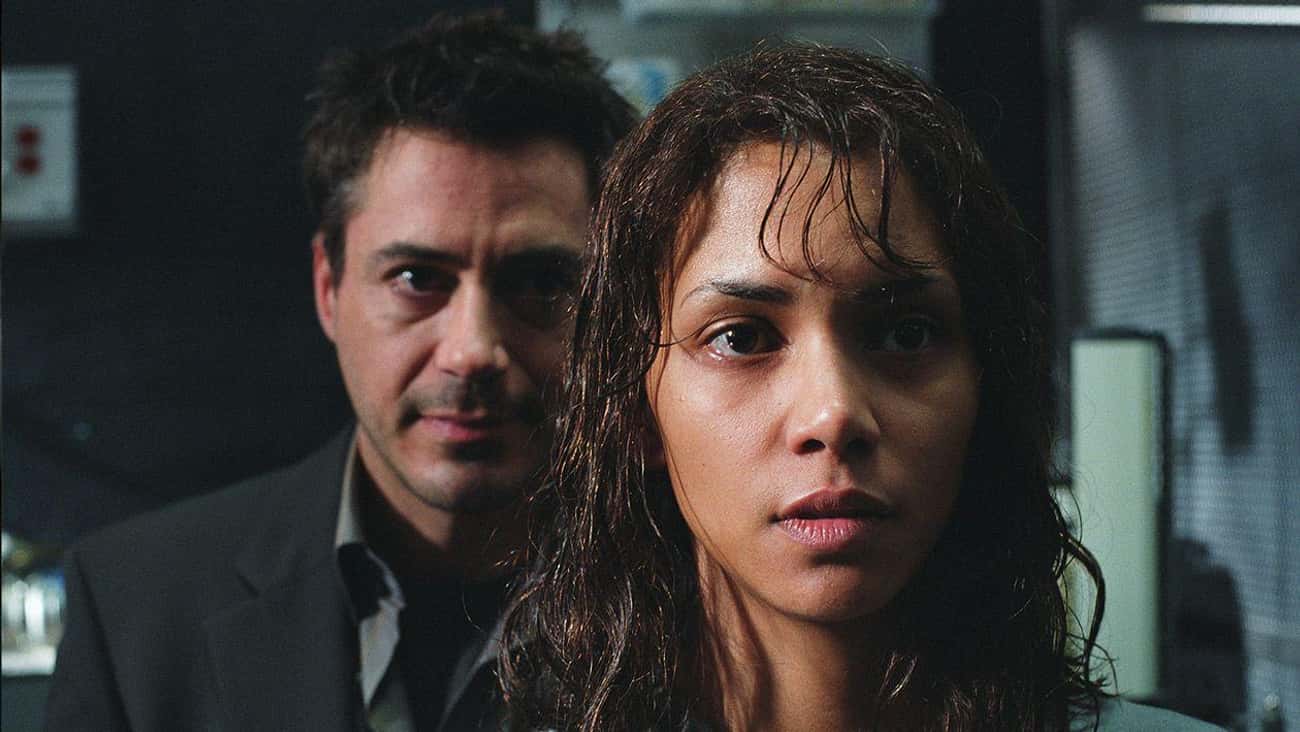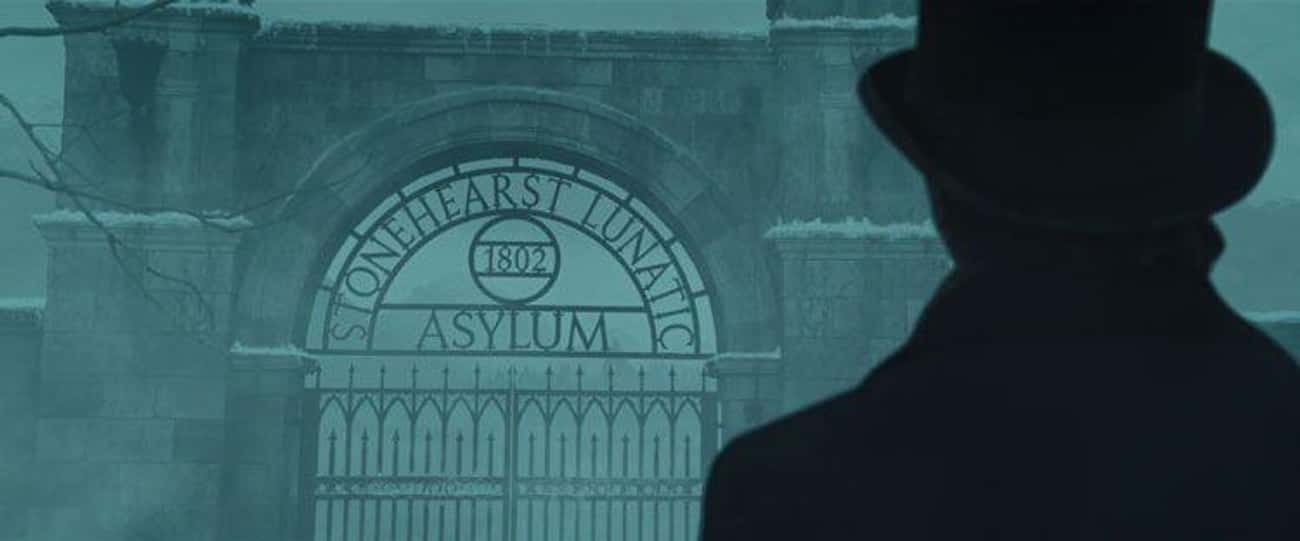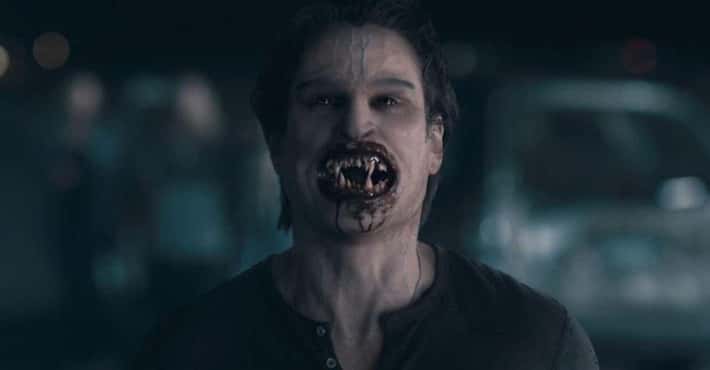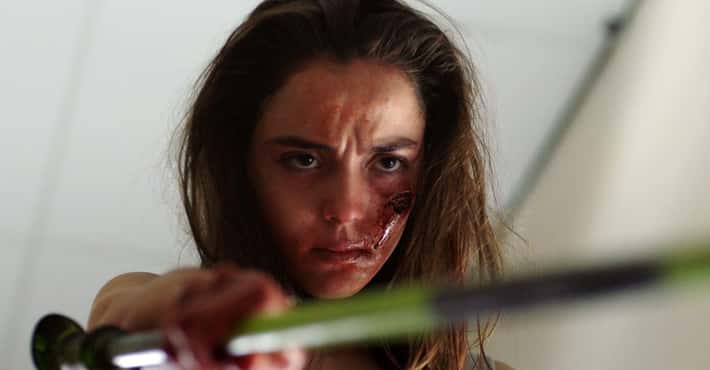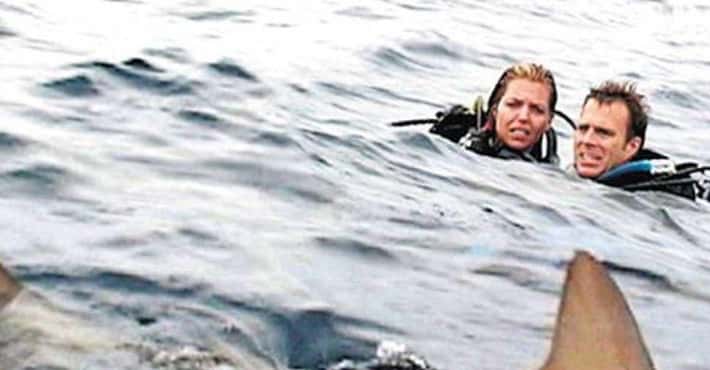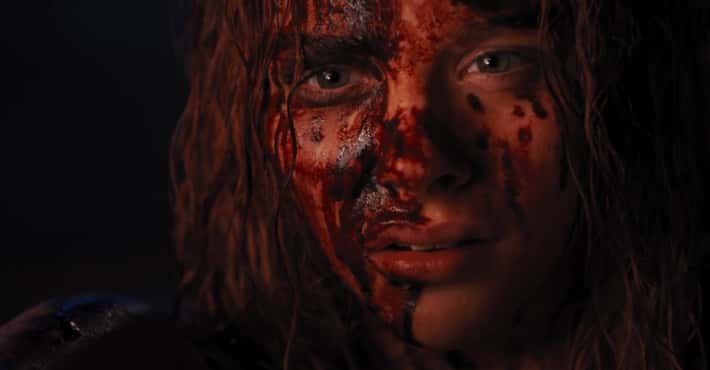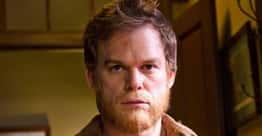15 Underrated Movies Set In A Mysterious Institution With A Deadly Secret
- 1131 VOTESPhoto: 20th Century Fox
Despite the fact director Gore Verbinski had previously helmed a contemporary horror classic (the American remake of The Ring) and a Disney blockbuster (Pirates of the Caribbean), his passion project, A Cure for Wellness, was a box office bust. Which is a shame, because this bizarre and twisty story about an executive at a financial services firm who travels to the Swiss Alps to bring back the company's CEO, who has checked into a mysterious "wellness center" and refuses to return, has atmosphere to spare.
Besides a robust 146-minute runtime, the film's very twistiness may have worked against it, as it's difficult to sell A Cure for Wellness without delving into spoilers about what our protagonist finds there. Rest assured it's something much stranger than the typical twists you may have seen in other pictures, and by the time the film reaches its entirely bonkers third act, we are well into mad science and high gothic territory.
- 2225 VOTESPhoto: Paramount Pictures
When it comes to twists in movies about sinister institutions, it doesn't come much more common than the person investigating the institution actually being a patient and that everything we, the audience, thought we knew was all in their head. Still, even the most tired cliches can be elevated by the right cast and crew, and when you've got Martin Scorsese adapting a novel by Dennis Lehane, you're on the right track.
Add in atmospheric photography and set design to create Boston's eponymous Shutter Island and its hospital for the criminally insane, a soundtrack of modern classical music, as well as an all-star cast, and you've got a picture to be reckoned with.
More Shutter Island- #6 of 252 onThe 200+ Best Psychological Thrillers Of All Time
- #17 of 53 onThe Best Movies Where The Bad Guy Wins
- #46 of 133 onThe Most Utterly Depressing Movies Ever Made
- 3143 VOTESPhoto: Universal Pictures
Set - and actually filmed - in and around the abandoned Danvers State Hospital, Session 9 merges the hospital's decaying hallways and actual reputation for spooky goings-on with a fictional account of an asbestos abatement crew who stumble upon dark secrets hidden away within the walls, while also succumbing to fractures in their own psyches due to the pressures of their blue-collar lives.
The result is a masterpiece of suggestion and creeping anxiety, as the walls of the abandoned institution begin to (maybe only figuratively) close in around them. Director Brad Anderson made a splash on the indie horror scene with this cinéma vérité-style minimalist horror picture, which makes ample use of its extremely creepy setting.
- 4196 VOTESPhoto: Warner Bros. Pictures
The doctor-turned-patient is a classic twist in dozens of psychological thrillers, relying on an unreliable narrator to keep the audience guessing about what's really happening and what's all in their head. Add in a potential ghost story, and you've got this flick from Dark Castle Entertainment. For those who don't remember Dark Castle, they made a spate of stylized horror pictures in the early 2000s, including remakes of House on Haunted Hill and Thirteen Ghosts.
Gothika was the company's first entirely original production, and features Halle Berry as a psychiatrist in a prison where she becomes incarcerated after being accused of the slaying of her husband. As she tries to sort out what really happened, she learns that people in the place have been keeping secrets, and has to figure out whom she can trust among the cast of characters, including a pre-Iron Man Robert Downey Jr.
More Gothika- #83 of 252 onThe 200+ Best Psychological Thrillers Of All Time
- #62 of 167 onThe 160+ Scariest Psychological Thrillers
- #82 of 121 onThe 100+ Best Movies With Black Female Leads
- 597 VOTESPhoto: Millennium Films
Director Brad Anderson made a name for himself with a series of twisty psychological thrillers like Session 9 and The Machinist. While a later and less well-known entry into his canon, Stonehearst Asylum is no less twisty or psychological, and it boasts a star-studded cast in the form of Kate Beckinsale, Michael Caine, Brendan Gleeson, and Ben Kingsley, among others.
Though it plays things close to the vest, the plot, which takes place in a turn-of-the-century mental institution, is actually an adaptation of one of Edgar Allan Poe's more humorous and satirical short stories, "The System of Doctor Tarr and Professor Fether," which has been adapted to film several times over the years. As such, its big twist (that the patients are actually running the asylum) may be transparent to anyone familiar with the story or its many other adaptations, but the movie isn't done twisting there...
More Stonehearst Asylum- #195 of 252 onThe 200+ Best Psychological Thrillers Of All Time
- #113 of 134 onThe Best Horror Movies Of The 2010s, Ranked
- #60 of 73 onThe Best Doctor Movies
- 640 VOTESPhoto: Fingerprint Releasing
Filmed entirely using iPhones, Steven Soderbergh's Unsane is a lo-fi nightmare made in secret, starring Claire Foy and Juno Temple. It takes as its jumping-off point an already scary premise - being committed into a mental hospital against your will. Add the further wrinkle that the man who has been stalking you is working at the hospital, and you've got a recipe for an effective little thriller, especially with someone as assured as Soderbergh behind the camera - or the iPhone, as the case may be.
Even if the working out of Unsane's plot isn't your cup of tea, it's interesting to see a movie filmed using such a different methodology.
More Unsane - 783 VOTESPhoto: 20th Century Studios
Released in the midst of the COVID-19 pandemic, The New Mutants had already experienced a load of production difficulties and seen a shuffling of talent both behind and in front of the camera. The final product, however, offers an odd mix of superhero flick, coming-of-age story, and horror film, with its tale of a group of young mutants who believe they are being trained to use their abilities in a shadowy facility but are actually being manipulated and victimized by their seeming caretakers.
Taking pages from A Nightmare on Elm Street 3: Dream Warriors, the resulting cocktail may not exactly be all that the sum of its parts might suggest, but in a cinematic landscape dominated by samey superhero films, it might deserve a look just for being willing to take a different angle on the subject.
More The New Mutants- #14 of 32 onThe Scariest Superhero Movies, Ranked
- #13 of 13 onAll X-Men Movies, Ranked Best to Worst
- #117 of 121 onThe Best Movies To Stream On Disney+
- 843 VOTESPhoto: ARC Entertainment
Horror master John Carpenter's first film in a decade and - so far, at least - his last film as director, was a disappointment to fans, but even the worst John Carpenter flick is still an interesting artifact, especially when it's pretty much the only film he's made in the 21st century.
The Ward follows a group of girls in a psychiatric hospital in 1966 who are being menaced by a deformed figure that may be the ghost of another patient they knocked off earlier. The cast includes Amber Heard, Danielle Panabaker, Jared Harris, and others, and while the twist may be familiar to anyone who has seen, say, the superior 2003 thriller Identity, and the proceedings may lack much of Carpenter's signature style, it's still an engaging ride and far from the worst movie in his occasionally uneven filmography.
More The Ward - 941 VOTESPhoto: CJ Entertainment
Acclaimed director Park Chan-wook followed up his vengeance trilogy (Sympathy for Mr. Vengeance, Oldboy, Lady Vengeance) with this eccentric and underseen flick about a pair of patients at a mental hospital who fall in love, protecting one another without discouraging their delusions or idiosyncrasies. Young-goon believes she is a cyborg, while Il-soon is schizophrenic and believes he can, among other things, take on traits from the people around him. Together, the two form an unlikely bond that includes fantasies of destroying all of the "men in white" who run the institution, as well as going out into a torrential thunderstorm in the hopes of getting struck by lightning to supercharge Young-goon.
The resulting tonal concoction may have a 91% on Rotten Tomatoes, but it doesn't enjoy the same fame as Park's more consistently dark films.
- #19 of 36 onGreat Movies About a Mental Breakdown
- #62 of 76 onThe 75+ Best Existentialism Movies
- #123 of 145 onThe Best Foreign Romance Movies, Ranked
- 1035 VOTESPhoto: 20th Century Fox
From a screenplay by Robert Bloch, with cinematography by John L. Russell - who also lensed Alfred Hitchcock's Psycho - The Cabinet of Caligari is so good, it has even been sampled in a Nine Inch Nails song. What's not to love? Though it shares (most of) a title with the 1920 silent classic The Cabinet of Dr. Caligari, Bloch's screenplay borrows little from that film except for its last-act twist, instead creating a sex-charged thriller about psychotherapy in which a stranded motorist finds herself trapped in the house of a polite yet sinister man (Halloween III's Dan O'Herlihy) who won't let her leave.
Is he really a psychiatrist, or is he a dangerous predator holding her there against her will? Anyone who has seen a movie since 1920 probably already knows the answer, but getting there is pretty fun and stylish, nonetheless.
- 1130 VOTESPhoto: Kinugasa Productions
Though lost for nearly a half-century, this Japanese silent film boasts an impressive pedigree. One of the screenwriters is Yasunari Kawabata, the first Japanese writer ever to receive the Nobel Prize for literature, while Eiji Tsuburaya, who co-created Godzilla and Ultraman, is credited as an assistant camera operator on the film. The story takes place in an institution in the countryside, where a man is working as a janitor in an act of penance for having driven his wife - now a patient of the asylum - insane with his cruelty.
Much of the film is taken up with the janitor's fantasies and daydreams, which blur the lines between the inmates of the asylum and those who can come and go as they please. Produced by a group of avant-garde artists called Shinkankakuha, or the School of New Perceptions, A Page of Madness remains infamous to this day for its surreal imagery.
- 1230 VOTESPhoto: Allied Artists
Legendary writer/director Samuel Fuller helms this tale of a journalist bent on winning a Pulitzer Prize, to the point of going undercover as a patient in a psychiatric hospital to try to solve a crime committed there - a tactic that was really used as early as 1887. The resulting film has been chosen for preservation in the National Film Registry at the Library of Congress and released on disc by Criterion. Not bad for a lurid psychological thriller with a poster that raves about a "strip-teaser" and "sex-maddened women."
Besides addressing the abuses of the staff at such an institution, the film also tackles subjects as diverse as bigotry and the atomic bomb.
- 1328 VOTESPhoto: Zeitgeist Films
Taking as its jumping-off point a couple of stories by Edgar Allan Poe (including his satiric "The System of Doctor Tarr and Professor Fether," a favorite of movies set in institutions) and the works of the Marquis de Sade, this film by Czech surrealist Jan Svankmajer tells the story of a man who voluntarily commits himself to an asylum for those who aren't yet insane but might become so in the future.
While within the asylum, he comes to learn the people running it - including his friend, who claims to be the Marquis de Sade, in spite of living a few hundred years too late - are actually escaped patients who have locked the real staff in the basement. As with any of Svankmajer's films, the interest in Lunacy exists less at the plot level than in the absurd and surrealist ways in which the director pulls it all off.
- 1420 VOTESPhoto: RKO Radio Pictures
The last of a string of famed horror movies Val Lewton produced for RKO in the '40s, Bedlam re-teamed Lewton with Boris Karloff and acclaimed director Mark Robson, who had previously helmed several of Lewton's other pictures for RKO and would go on to garner two Oscar nominations and a string of high-profile gigs, such as directing films like Peyton Place, Von Ryan's Express, and Valley of the Dolls.
Set in 1761, in a fictionalized version of the Bethlem Royal Hospital, or "Bedlam" for short, the film sees Karloff's sinister Master Sims running the hospital as his own corrupt fiefdom, wherein the "loonies" are mistreated horribly. When an idealistic reformer (Anna Lee) challenges him, Sims has her committed and plans to subject her to his ultimate "cure."
- 1527 VOTESPhoto: Warner Bros.
As movies go, they don't come much weirder than William Peter Blatty's directorial debut, adapted from his own novel, The Ninth Configuration. Not sure? Check out some of the images that come up when you do a search for the movie, including perhaps its most indelible moment, an astronaut confronting the figure of a crucified Christ on the moon. Funded by Blatty himself - with matching funds from Pepsi, of all places - when no major studio would touch it (in spite of the massive box office success of The Exorcist), The Ninth Configuration is equal parts comic farce and psychological thriller, set in a castle that was converted into a hospital for soldiers who had suffered from mental breakdowns near the end of Vietnam.
Like most of Blatty's work, it is every bit as concerned about theology and religion as it is about the psychological state of its characters, who include a cast of familiar faces like Stacy Keach, Scott Wilson, Tom Atkins, Joe Spinell, Robert Loggia, and Jason Miller, who played Father Karras in The Exorcist.



